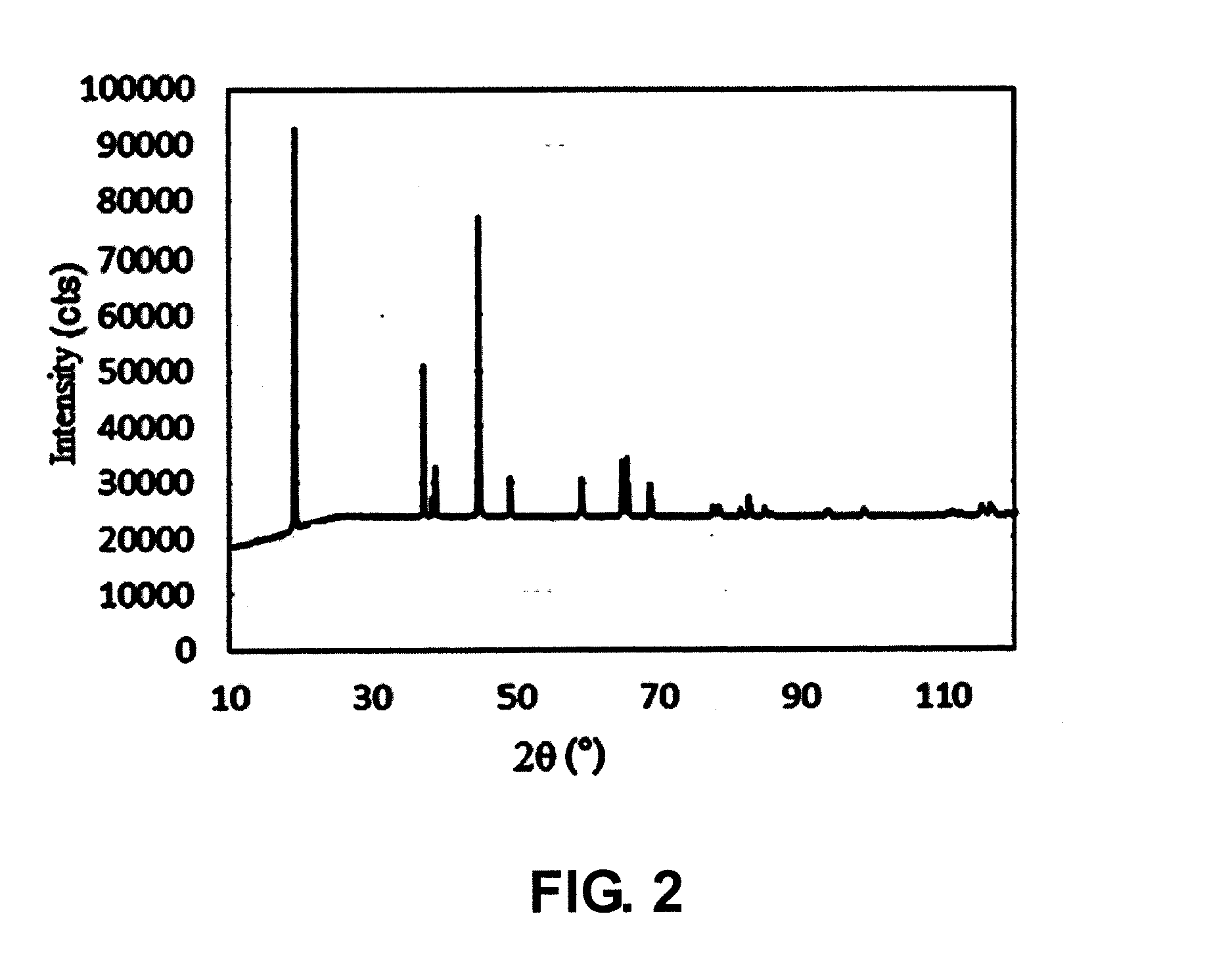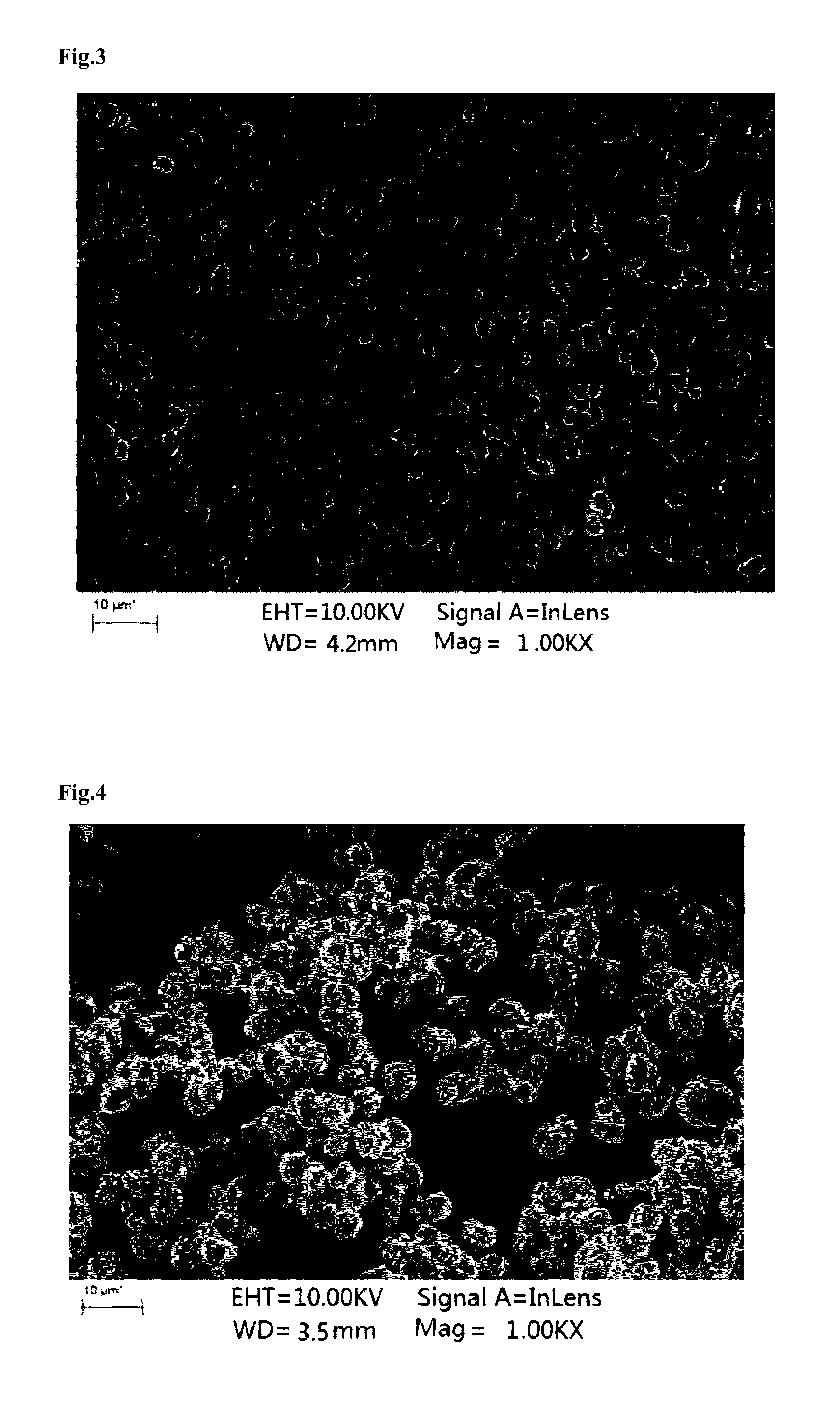Positive electrode material, method for preparing the same and li-ion battery containing the positive electrode material
a positive electrode material and positive electrode technology, applied in the field of lithium batteries, can solve the problems of threatening the safety of the entire cell, large expansion of the electrode, and defects in existing ternary positive electrode materials that cannot be overcome, and achieve excellent performance and excellent performan
- Summary
- Abstract
- Description
- Claims
- Application Information
AI Technical Summary
Benefits of technology
Problems solved by technology
Method used
Image
Examples
examples
[0090]The present application will be further described below through specific examples. However, these examples are only intended for illustration, rather than limitation to the protection scope of the present application.
[0091]The agents, materials and equipments used in the following examples are all commercially available unless particularly explained.
[0092]In the following examples, comparison examples and test examples:
zirconium oxide: ZrO2; aluminium oxide (Al2O3);
[0093]Inductively Coupled Plasma emission spectrometer (ICP), Melvin laser particle size tester (LPS).
example one
I. Synthesis of Precursor
[0094](1) Nickel sulfate, manganese sulfate and cobalt sulfate were added into water to prepare a solution, wherein nickel sulfate, manganese sulfate and cobalt sulfate were added in such contents that the molar ratio of nickel element, manganese element to cobalt element therein was Ni:Mn:Co=5:2.5:2.5;
[0095](2) ammonia water and an aqueous solution of sodium hydroxide was fed into the solution in step (1) to react, and then the solution was stirred at 40° C. to obtain a reaction system containing a precursor of a positive electrode material, wherein, the concentration of the ammonia water was 0.4 mol / L, the concentration of the aqueous solution of sodium hydroxide was 1 mol / L, and the pH of the reaction system was 11.3;
[0096](3) the precursor of the positive electrode material obtained in step (2) was washed with water, filtered and dried in sequence, wherein, the temperature for drying was 100° C.
II. Preparation of Positive Electrode Material
[0097](1) Lith...
example two
I. Synthesis of Precursor
[0102](1) Nickel sulfate, manganese sulfate and cobalt sulfate were added into water to prepare a solution, wherein nickel sulfate, manganese sulfate and cobalt sulfate were added in such contents that the molar ratio of nickel element, manganese element to cobalt element therein was Ni:Mn:Co=5:2.5:2.5;
[0103](2) ammonia water and an aqueous solution of sodium hydroxide was fed into the solution in step (1) to react, and then the solution was stirred at 50° C. to obtain a reaction system containing a precursor of a positive electrode material, wherein, the concentration of the ammonia water was 0.5 mol / L, the concentration of the aqueous solution of sodium hydroxide was 4 mol / L, and the pH of the reaction system was 11.6;
[0104](3) the precursor of the positive electrode material obtained in step (2) was washed with water, filtered and dried in sequence, wherein, the temperature for drying was 90° C.
II. Preparation of Positive Electrode Material
[0105](1) Lithi...
PUM
| Property | Measurement | Unit |
|---|---|---|
| temperature | aaaaa | aaaaa |
| temperature | aaaaa | aaaaa |
| temperature | aaaaa | aaaaa |
Abstract
Description
Claims
Application Information
 Login to View More
Login to View More - R&D
- Intellectual Property
- Life Sciences
- Materials
- Tech Scout
- Unparalleled Data Quality
- Higher Quality Content
- 60% Fewer Hallucinations
Browse by: Latest US Patents, China's latest patents, Technical Efficacy Thesaurus, Application Domain, Technology Topic, Popular Technical Reports.
© 2025 PatSnap. All rights reserved.Legal|Privacy policy|Modern Slavery Act Transparency Statement|Sitemap|About US| Contact US: help@patsnap.com



